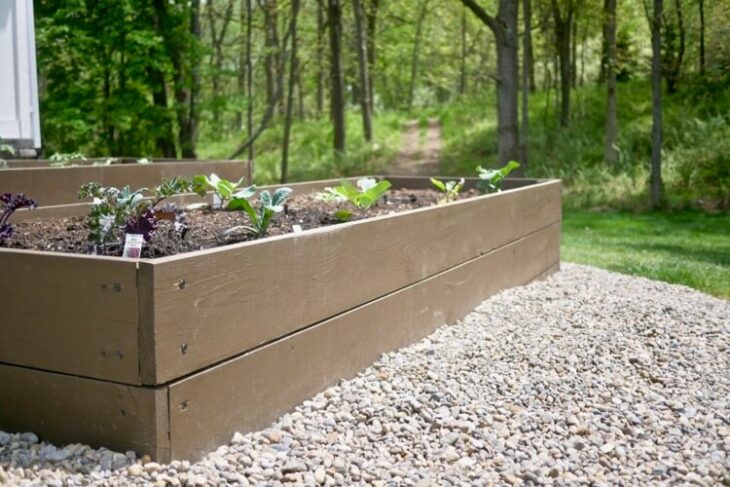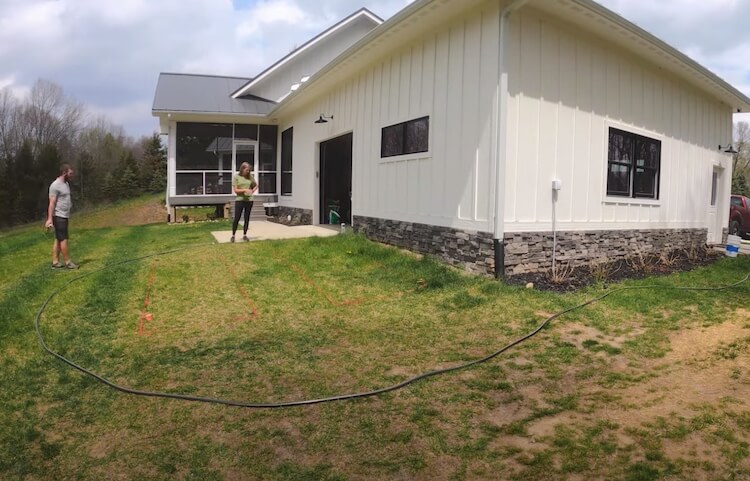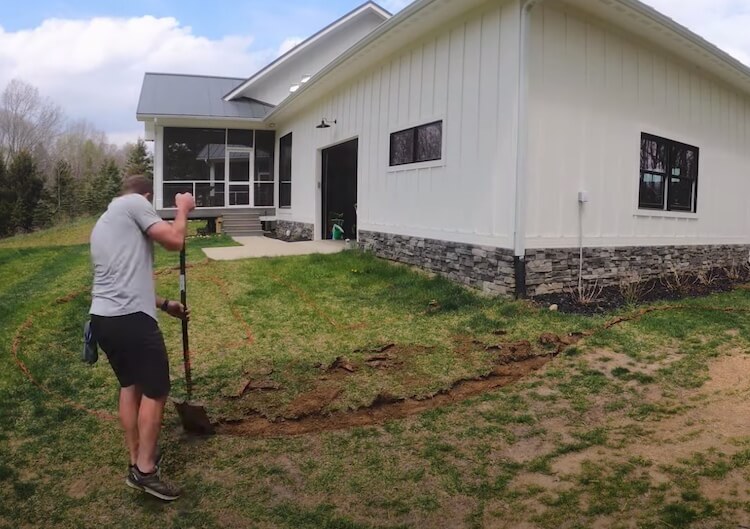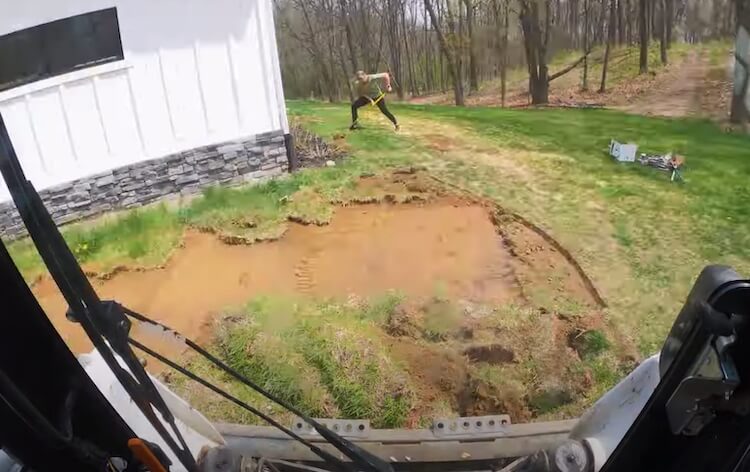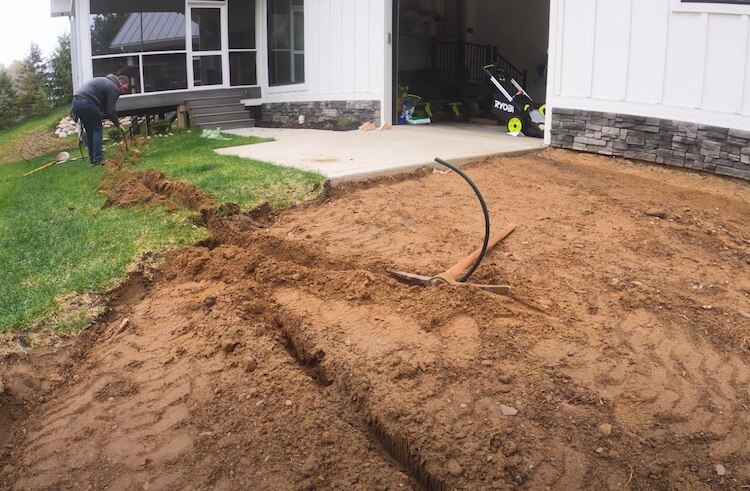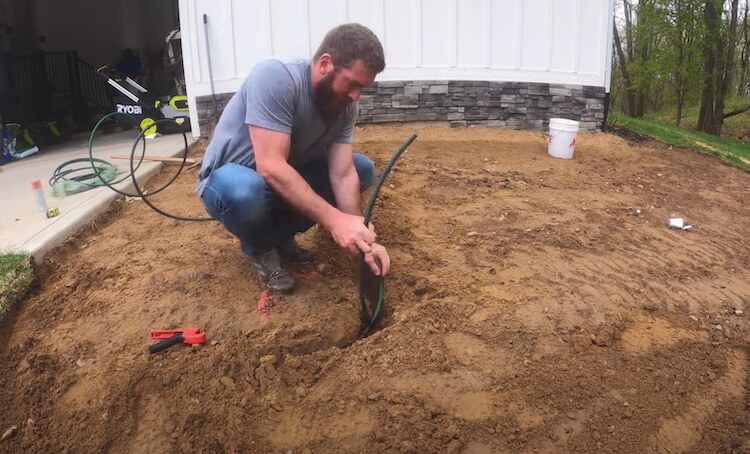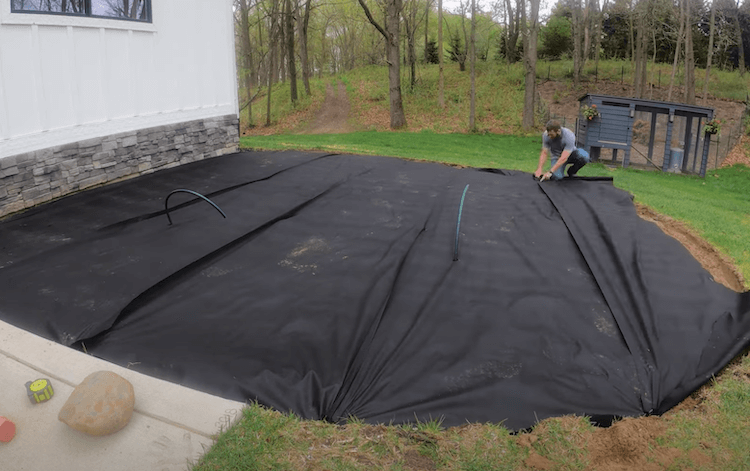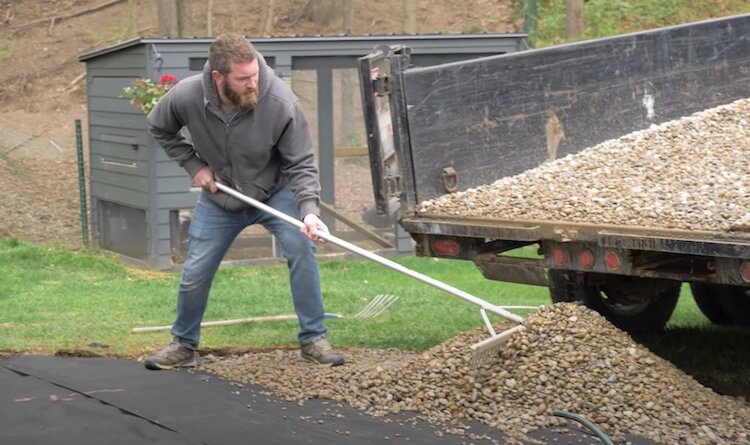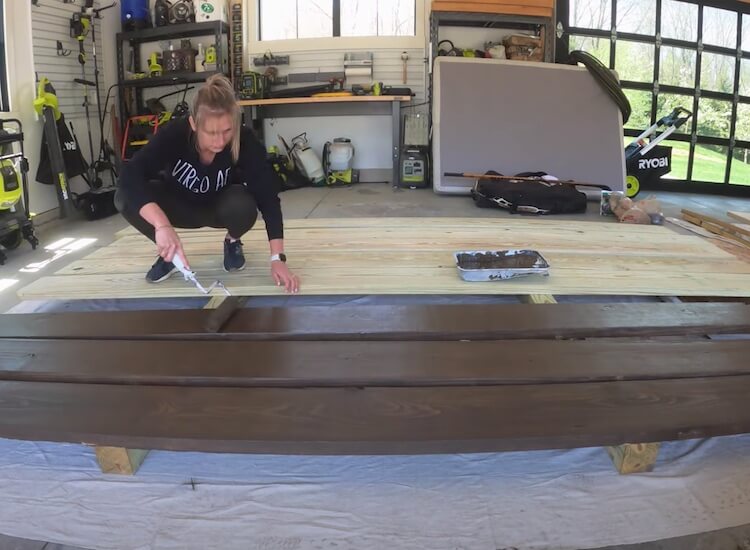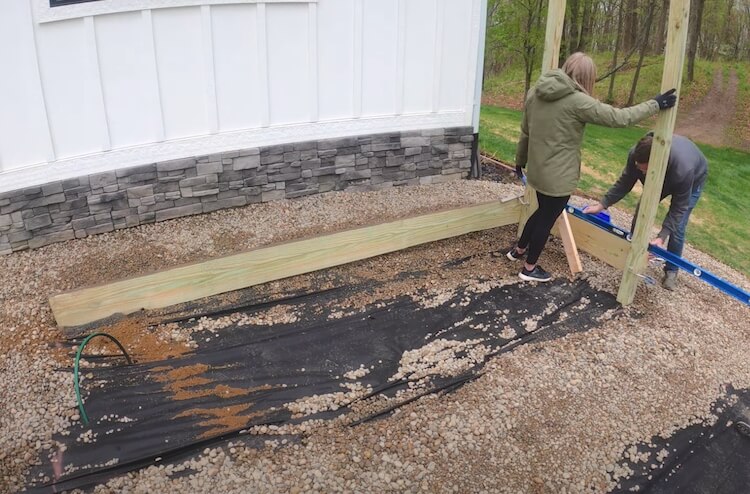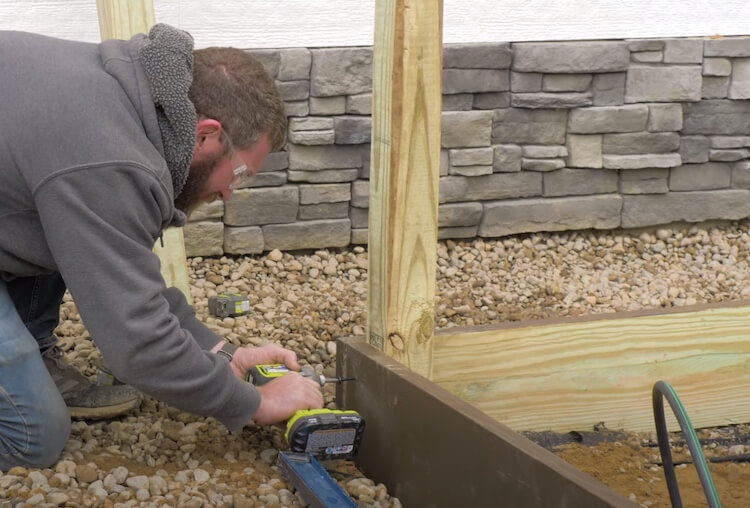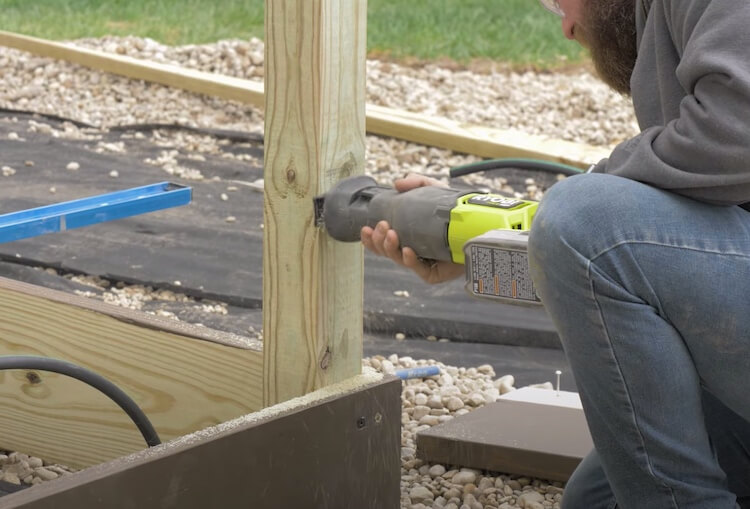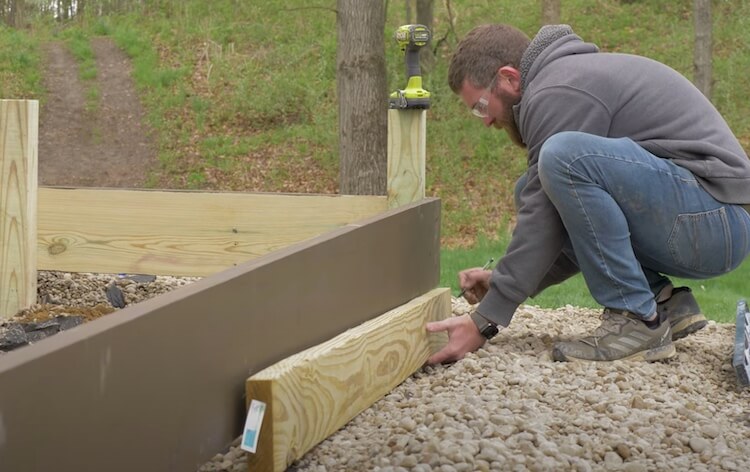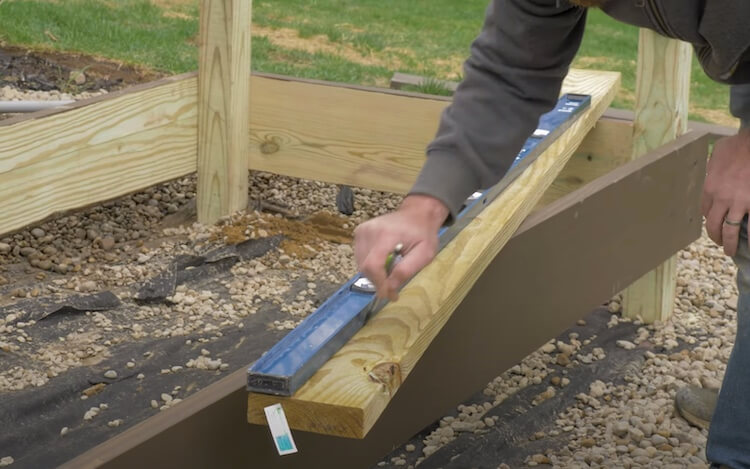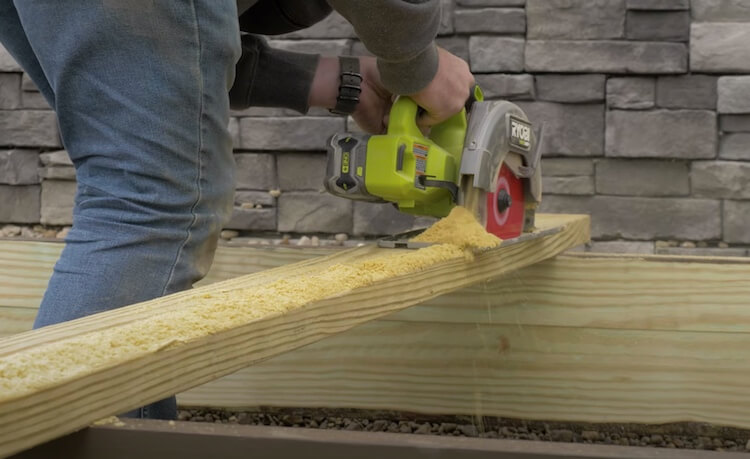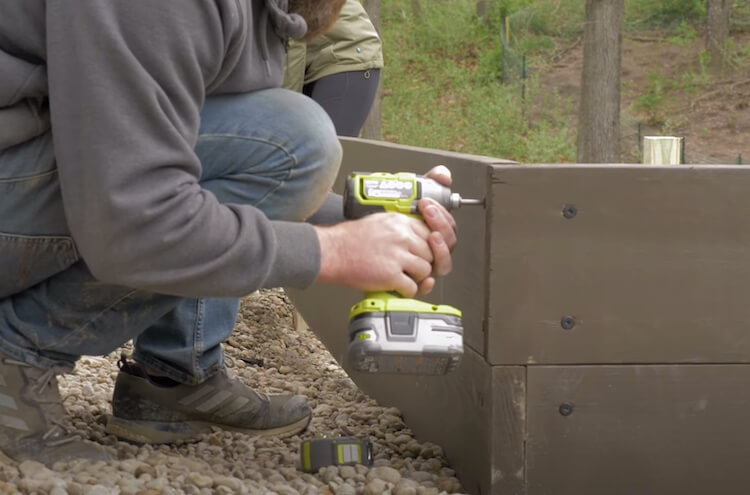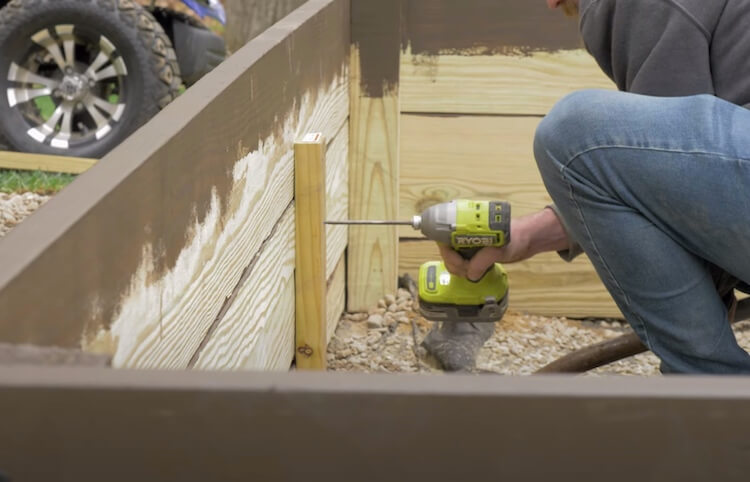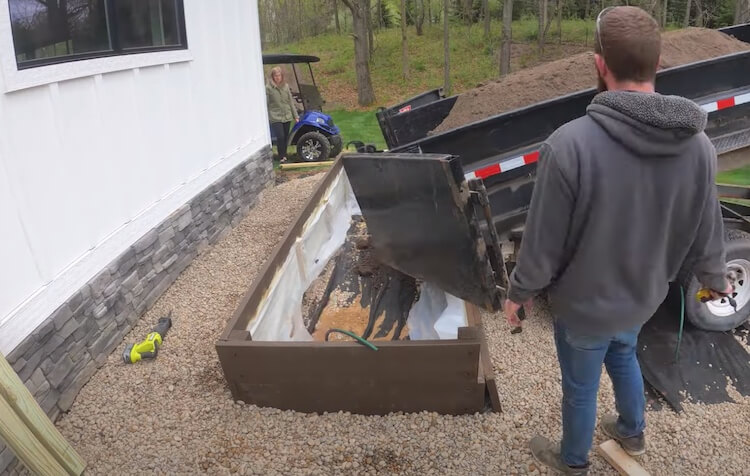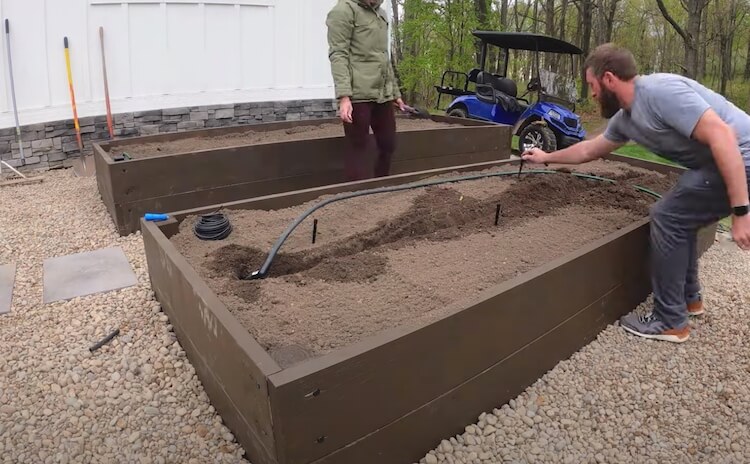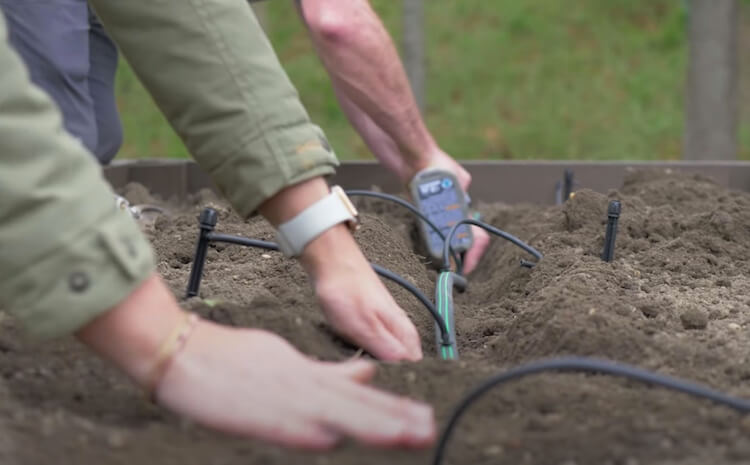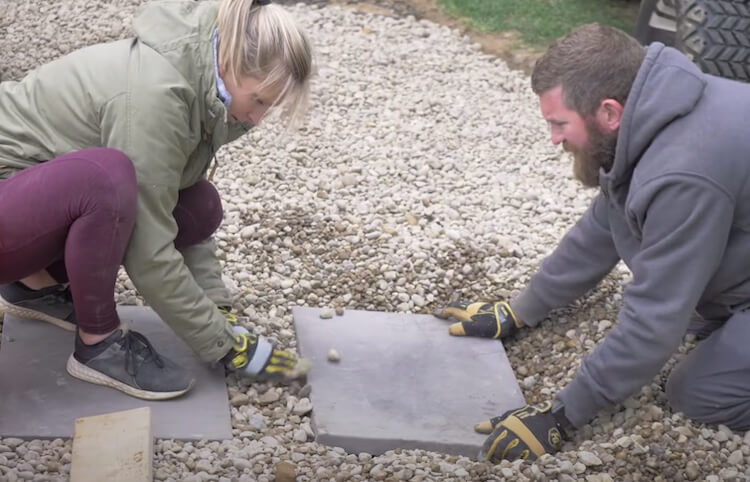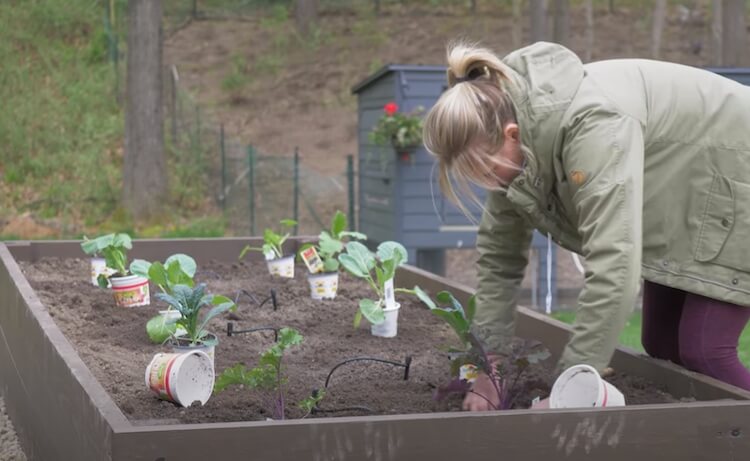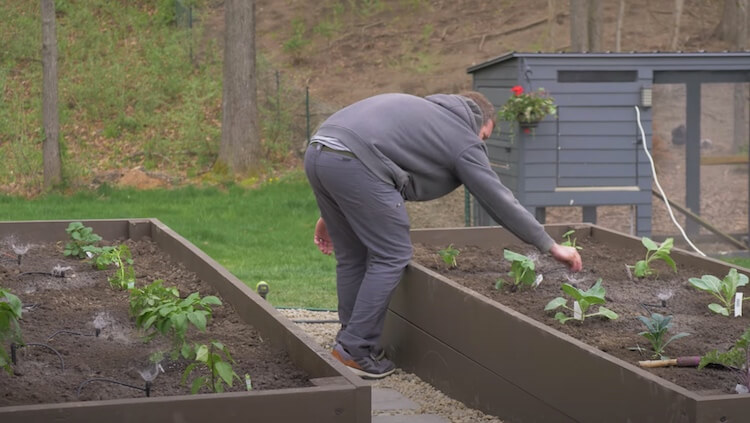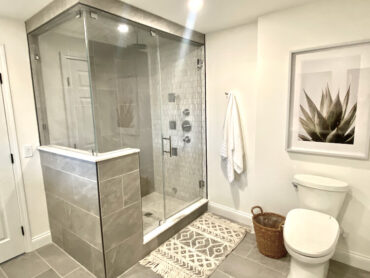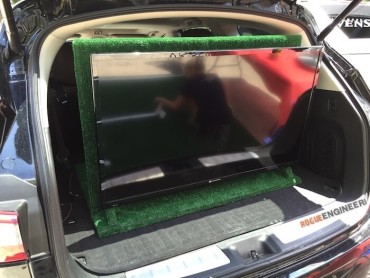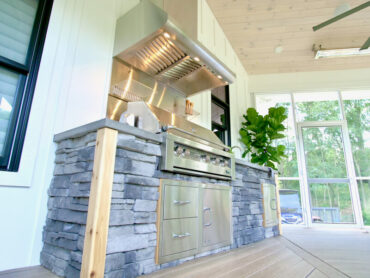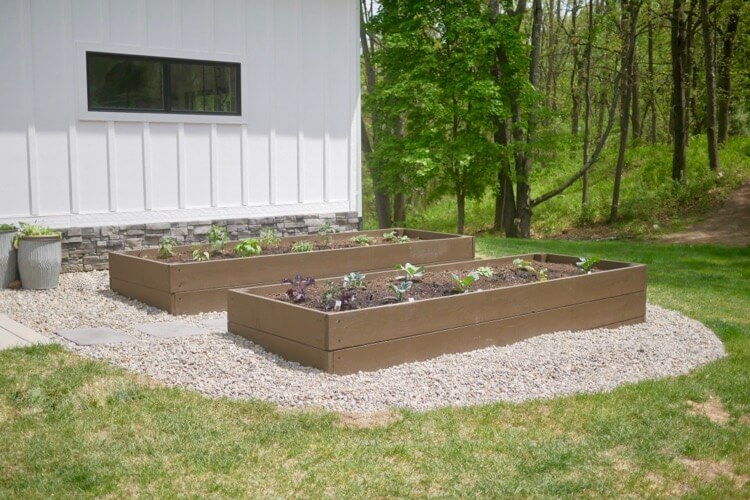
Since moving into our new house we have been wanting to build some raised vegetable gardens. We finally decided that this was our year to tackle it. Ultimately we settled on two 12ft by 4ft beds which is just enough for us. One thing we wanted to do was to make this as easy to use and maintain as possible. So we also decided that irrigation was a must. Read on to see exactly how it went it.
Project Video
Sponsored by:

This tutorial will guide you through how we build our raised garden area and installed irrigation to automate the watering process.
- Layout and Topsoil Removal
After locating the beds where we wanted them we used a tape measure and some spray paint to mark the boxes. Then we used a hose to layout an area that will be landscaped with rock to make mowing and edging easier.
With the area marked out in spray paint, I then started shoveling out the top soil and cutting a nice clean vertical edge between the lawn (or lack thereof) and what will be landscaped.
Luckily I had access to my father-in-law’s skid steer which made quick work of clearing the rest of the grass and topsoil. Getting rid of the top soil will help make sure weeds don’t grow up and it will provide solid ground to build the raised beds on. - Roughing in the Irrigation
To get water to the planters I trenched a line from the nearest spigot and laid 1/2in sprinkler line to each raised bed location.
I used a tee to go from one bed to the other and made sure to leave enough line exposed so that when the bed was filled with topsoil it would still be exposed. - Weed Barrier and Stone
To make sure those pesky weeds don’t grow up we pinned down some weed barrier before the stone was laid.
If you plan on bringing in bags of stone or mulch, this step could be done after the beds are built. Since we had a dump trailer, I picked up a load of 6A natural stone and dumped it in place and spread it around. Had I waited until after, I would have had to move it by hand more than I wanted. - Appling a Finish
This step is optional since we are using 2×10 treated lumber but since they are next to the house we wanted the planters to look nice. We opted to stain the outside of the planters with Behr’s solid color waterproofing stain in the color coffee. Doing so before assembly saved us a love of time and effort. - Assembling the Planter Boxes
I started at the highest side of the box first and worked my way around. I set one end if the 2x10x12 board on the ground and clamped the other end to a 4×4 post. After getting this board perfectly level, I secured it to the 4×4 post with two lag bolts.
I then worked my way around the first row, using the same method to make sure it was nice and level. I also wanted to stagger the joints so each board had one end flush with the edge of the 4×4 and the other overhung the 4×4 by 1-1/2″ so the next board could butt into that.
After the first row was done I measured and cut the 4×4 off at what will be the top of the next row.
The issue with building a level planter on unlevel ground is that the low side ends up having a gap at the bottom. I opted to cut a tapered board to fill this gap. Another option would be to dig down and bury the bottom board but this was easier.
To do so I simply laid the board down the side and measured how much I would need to cut off at each end.
I then marked that with a straight edge and cut the taper with my circular saw so we could get those boards stained to match.
With the stain drying I could finish installing the top row.
We also stained just a little ways down the inside of the planters so that it would look nice with the soil not completely filling it.
Before filling the planters, I added 2×4 pieces inside the boxes to tie all the sides together and help keep them in line while minimizing bowing. - Filling with Topsoil
Before filling with topsoil we stapled plastic to the sides which will help keep and water and soil from seeping through the cracks as well as protect the lumber and plants from direct contact with each other. - Finishing Off the Irrigation
After leveling the topsoil we dug a trench for the main line down the center of each bed and located about there we wanted the micro sprayers. We installed 6 in each bed but I ended up only using 4.
We then drilled holes in the main line at each sprayer location and attached micro lines to connect each sprayer and plugged the ends of the main 1/2″ line.
Last but not least, I terminated the other end of the 1/2″ line with a 3/4″ hose connector and tied that into the hose spigot with a timer on it for daily waterings. - Laying Stepping Stones
To avoid having to walk on the smaller stone all the time (especially barefoot) we opted for stepping stones in between the planters.
We removed the stone and used a little sand to level the area before placing the stepping stones and backfilling the stone around them. - Adding Plants
Most of our plants only required about 18-24″ of space so we were able to get about 24 plants in these beds. - Adjusting the Sprayers
After the plants are in I then went back and adjusted the sprayers locations and pressure to suit.
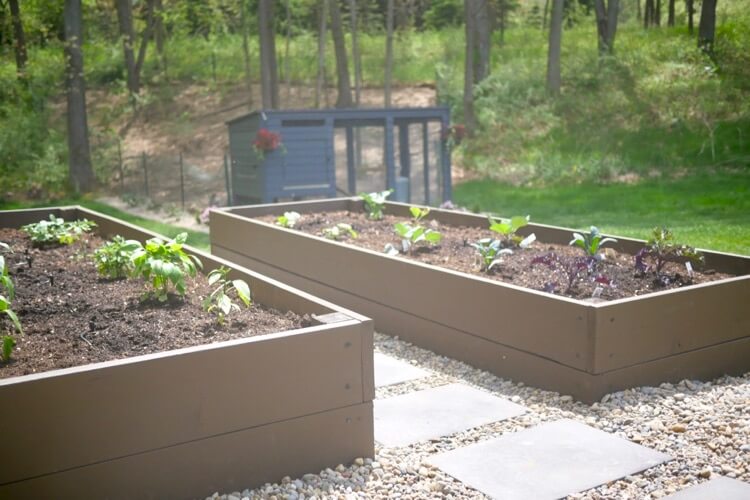
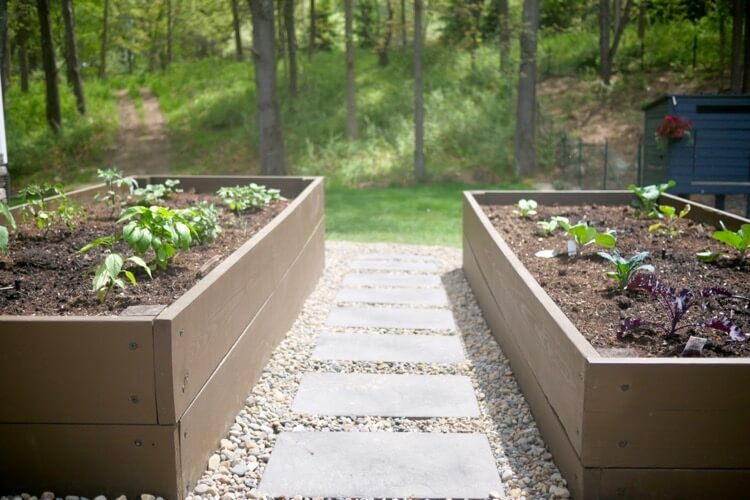
We are really looking forward to having our own homegrown veggies this year and we will be sure to post updates on social so make sure to follow us on Instagram and Facebook if you don’t already.
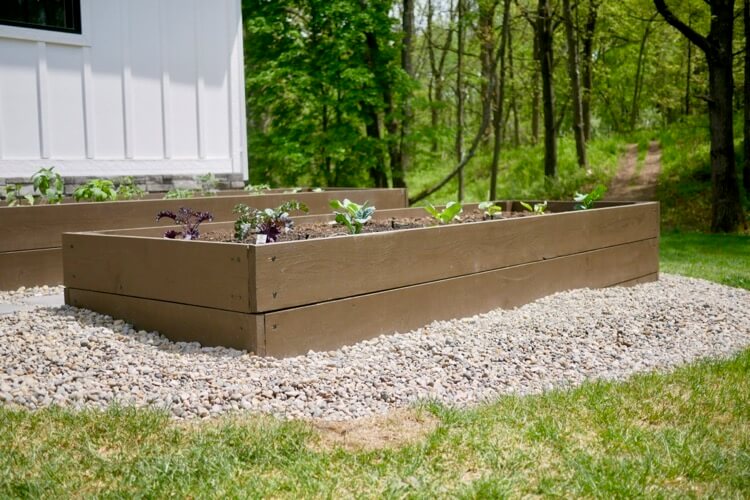
If you end up tackling this project yourself please post a photo below and comment with any insights you might have for others to learn from!

